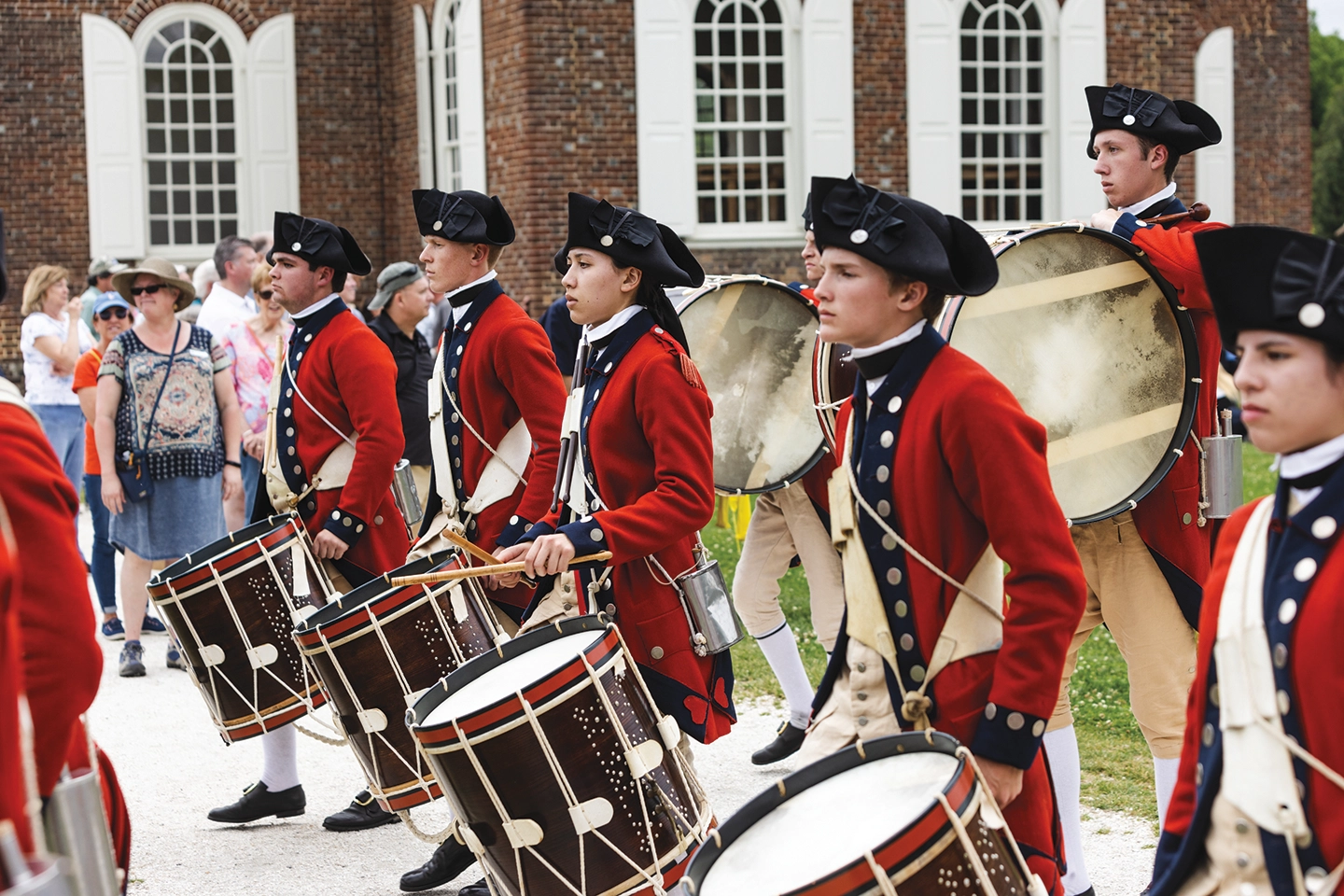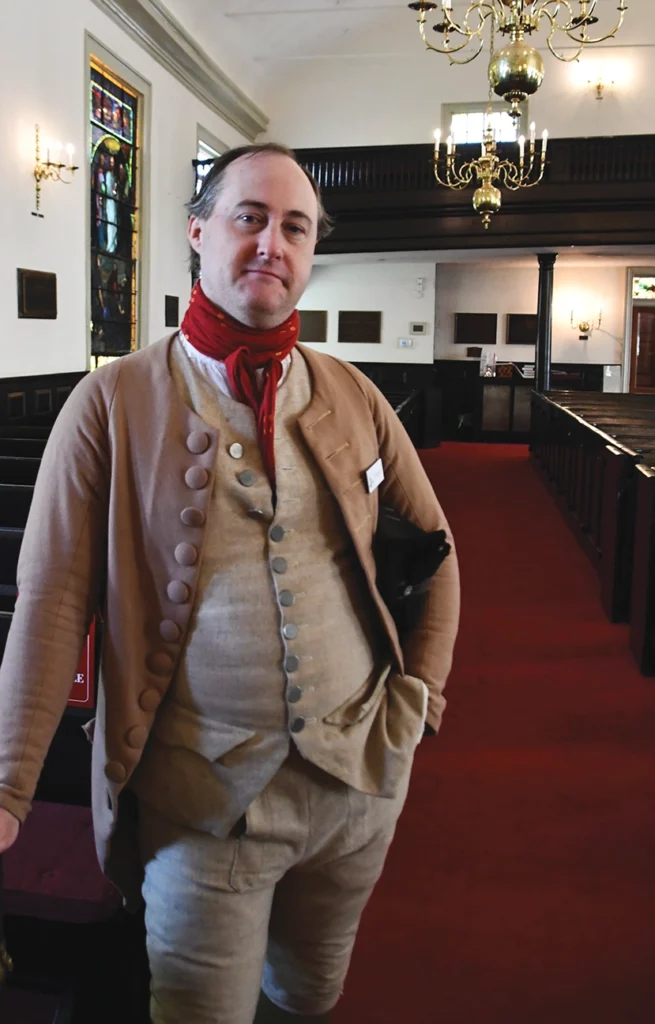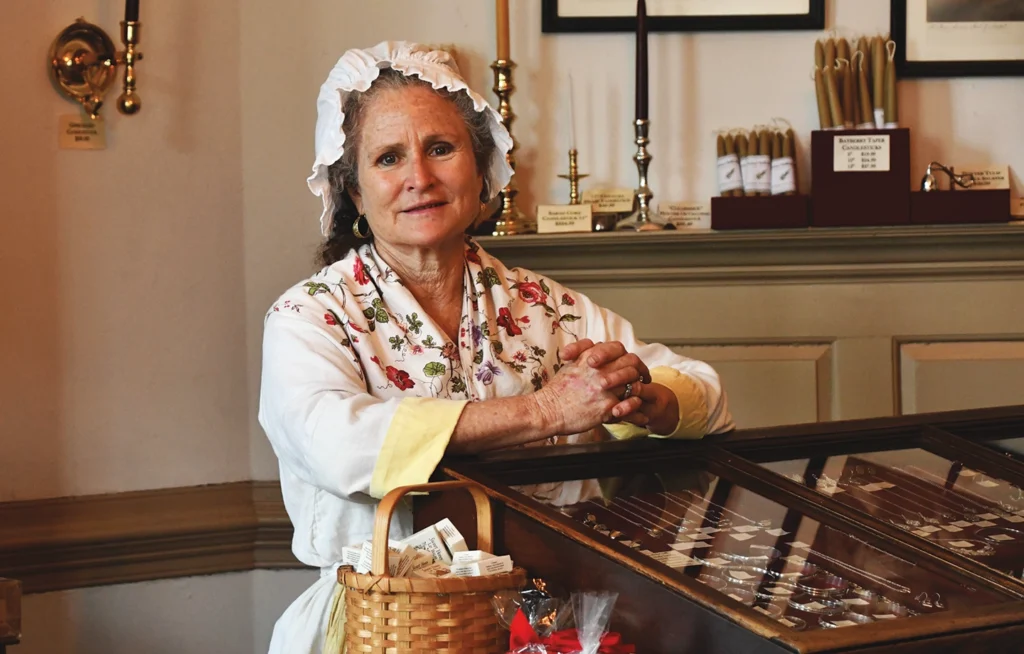By Marilyn Jones
Over the course of eight days, I wandered the paths of history. I walked the grounds of James Monroe’s Highland. I explored Jamestown, the battlefields of Yorktown and an 18th century community in Colonial Williamsburg. I visited the homes of Thomas Jefferson and George Washington. Broken into four manageable segments, I was able to make it from Raleigh to Charlottesville, Richmond, Williamsburg, Jamestown, Yorktown and Fredericksburg, and back to Raleigh with just 11 hours of driving time.

Raleigh > Charlottesville (3.5 hours)
Historically, Charlottesville is best known as the home of Thomas Jefferson and his Monticello residence—and the crowds prove it. Several different tours are available, including the home, the gardens, and the Slavery at Monticello tour. I took the Highlights Tour—an excellent 45-minute introduction to his plantation (including the enslaved servants), the enslaved Sally Hemings and their six children, and his accomplishments as a statesman and the third president of the United States.
Adjacent to Monticello is James Monroe’s Highland. Tours include the 1818 guesthouse as well as outdoor spaces, including a scavenger hunt for kids. The “A Window to a New America” installations provide insight into the daily lives of the enslaved people, told with the aid of the Highland Council of Descendant Advisors, whose ancestors were enslaved on the property.

CHARLOTTESVILLE > RICHMOND (1 hour)
A great way to begin your tour is the Virginia Museum of History & Culture. A special exhibit, Give Me Liberty, which runs through January 4, 2026, commemorates the 250th anniversary of the Declaration of Independence. Paintings, displays, dioramas and exhibits tell the story of the Revolutionary War.
From here, pay a visit to St. John’s Church, where Patrick Henry gave his “Give Me Liberty or Give Me Death!” speech. A guide dressed in 18th century clothing explains the history of the meeting and the fiery speech given to the Second Virginia Convention meeting on March 23, 1775. Before you leave, tour the cemetery dating back to 1741. Notables include George Wythe (one of the United States’ Founding Fathers), Elizabeth Arnold Poe (Edgar Allan Poe’s mother) and several Virginia governors.
Travel back to 1611 at the Henricus Historical Park, the second successful English settlement in the United States. Excellent guides take guests back in time to a soldier’s cabin, church, plantation, hospital and other sites to highlight the major activities here. Two inns, Hanover Tavern (1733) and The Half Way House (1760), also showcase the area’s history.
On my tour of Hanover Tavern, guide Mary Parker delved into the lives of nearly 300 years of guests. In one story, Patrick Henry married Sarah Shelton, the daughter of the tavern’s owners. Working at the tavern exposed Henry to the legal world, and in April 1760 he obtained a license to practice law.
During the Revolutionary War, The Half Way House—named so because it lies halfway between Richmond and Petersburg—was the Marquis de Lafayette’s military headquarters. During the Civil War it served as Union General Benjamin Butler’s headquarters. The tavern often welcomed famous guests, including George Washington, Patrick Henry, Thomas Jefferson, Robert E. Lee and Ulysses S. Grant. Both inns offer excellent cuisine, although The Half Way House does not offer tours.

RICHMOND > HISTORIC TRIANGLE (1 hour)
The next leg of the trip took me to the Historic Triangle: Jamestown, Colonial Williamsburg and Yorktown. I had planned to spend two days here, but there was not enough time to explore as much as I wanted. I recommend planning at least a full day for each of the three destinations.
Historic Jamestown, founded in 1603 as the first permanent English settlement, includes sites managed by Preservation Virginia (Jamestown Rediscovery) and the National Park Service (Colonial National Historical Park). Along with the Jamestown Glasshouse (where artisans create glassware) and Jamestown Settlement (a living history museum of 17th century Virginia history and culture), Colonial Williamsburg offers original and recreated houses and businesses that stretch along several streets. Period-dressed interpreters explain trades, gardening and daily chores. It’s like walking through living history.
Like Jamestown, Yorktown offers the Yorktown Battlefield; part of the Colonial National Historical Park; and the American Revolution Museum at Yorktown—a living history museum complete with exhibits, galleries, a continental army camp and a Revolution-era farm.
In addition to the three main slices of history, there are many 21st century amusements, including Busch Gardens Williamsburg, shopping and excellent restaurants.

HISTORIC TRIANGLE > FREDERICKSBURG (2 hours)
The last stop is the northernmost at Fredericksburg, a small community of 28,000 that offers a surprising number of history lessons. Start with the trolley tour, a 75-minute guided tour of the downtown historic district and the Fredericksburg Battlefield. The Hugh Mercer Apothecary Shop is a fun way to learn about 18th century medicine, including leeches.
Other attractions include the Mary Washington House (George visited his mother in the House several times), Rising Sun Tavern (once the home of Charles Washington, George’s brother), and George Washington’s boyhood home at Ferry Farm.
After enjoying these 18th century attractions, enjoy a stroll on Caroline Street with its many specialty and antique shops and restaurants.
FREDERICKSBURG > RALEIGH (3.5 hours)
After a busy week of history, it’s a short jaunt back to the Triangle. The route takes you back through Richmond, so you could plan an extra stop to take in additional sites. As we approach the 250th anniversary of the Declaration of Independence in 2026, it’s a great time to visit Virginia’s historic offerings.
Check out more stories from around the Triangle!


